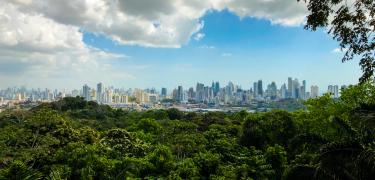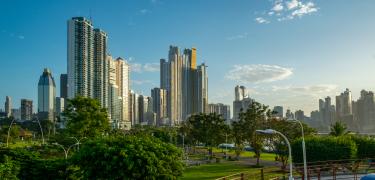Birdwatching in Boquete
Boquete is a destination that no bird fan will want to miss. Due to its variety of microclimates, valleys, mountains, cloud forests, and rainforests, Boquete is home to more than 400 species of birds. Here you'll find a paradise for ornithologists and birdwatchers.

Bird Counting in Boquete
When visiting the mountains of Boquete, look out for the collared whitestart (Myioborus torquatus), sulphur-winged parakeet (Pyrrhura hoffmanni) and the majestic resplendent quetzal (Pharomachrus mocinno).
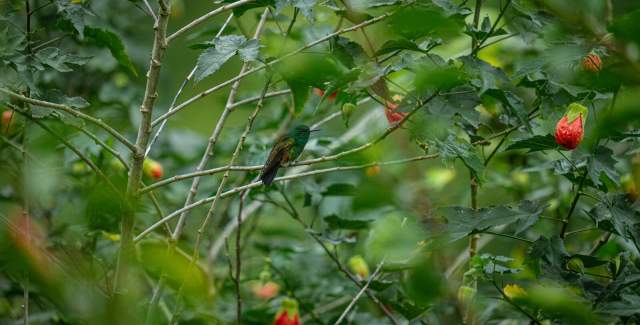
Walk along the slopes of the Baru Volcano looking for the rarest species, such as the volcano junco (Junco vulcani) and the volcano hummingbird (Selasphorus flammula). In Boquete there are so many birds that from the comfort of your hotel or among the gardens of the town you can even see migratory birds such as the Tennessee warbler (Leiothlypis peregrina) and the Baltimore oriole (Icterus galbula).
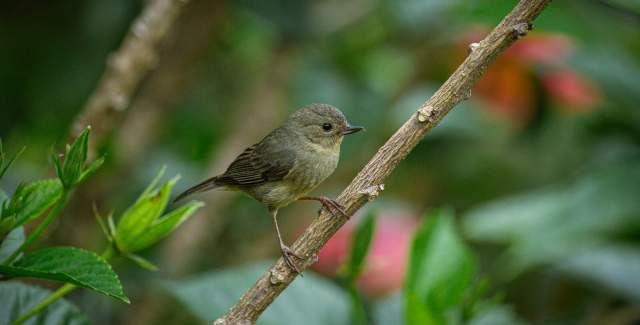
Birdwatching Season
Visit the forests of Boquete between the end of February and April. According to experts, this season is easier to see the mythical quetzal and also coincides with the breeding season of several species.
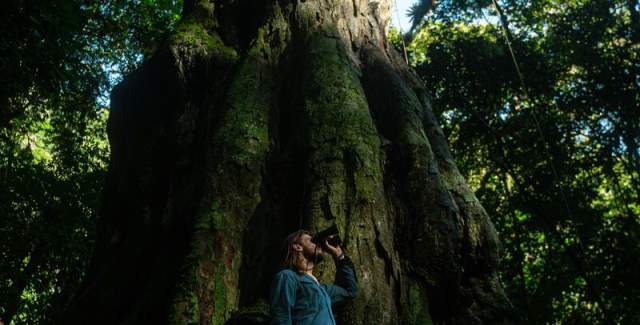
Get ready to watch the birds perform their courtship rituals, arrange their nests, and feed the newborns. This is also the migration season for some birds returning from spending winter in the south.
But if you want to see thousands of migrations, come between September and November. In these months the birds of the north descend to the south, at the same time and by the same route. This will be the perfect time to go hiking and add species to your count. Likewise, if you visit us at another time, rest assured that Boquete is a great destination for bird watching throughout the year.

High-altitude Hikes
If you're visiting Boquete and are looking to count the most bird species, visit the highest parts of the district, up to 6,561 ft above sea level (2,000 meters).
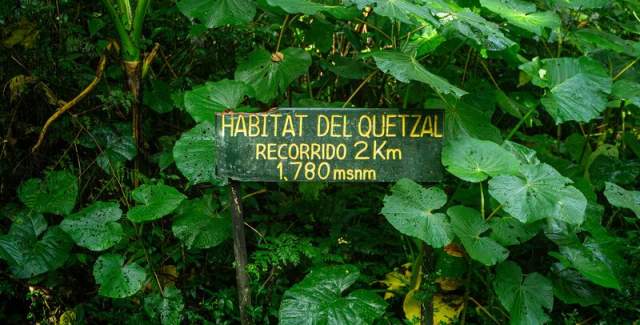
On the Los Quetzales Trail, which runs through the Baru Volcano National Park, look carefully for the three-wattled bellbird (Procnias tricarunculatus), the zeledonia (Zeledonia coronata), the fire-throated hummingbird (Panterpe insignis) and, of course, the quetzal.
On the Camino del Pipeline, in Los Naranjos, you'll find the green hermit (Phaethornis guy), the red-faced spinetail (Cranioleuca erythrops), the yellow-winged vireo (Vireo carmioli) and the elegant euphonia (Chlorophonia elegantissima).
You can also visit the La Fortuna and Palo Seco nature reserves, where you can see unique birds such as the bare-necked umbrellabird (Cephalopterus glabricollis), the azure-hooded jay (Cyanolyca cucullata), the barred hawk (Morphnarchus princeps) and the scale-crested pygmy tyrant (Lophotriccus pileatus).
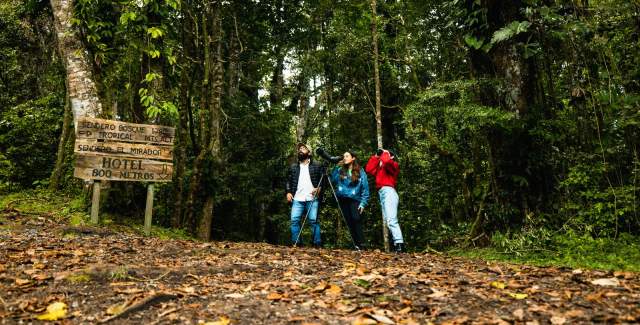
Closer to the Village
If you want trails at lower altitudes, visit Caldera, at 984 ft (300 m) above sea level, where you can see the orange-collared manakin (Manacus aurantiacus), the rose-throated becard (Pachyramphus aglaiae), the fork-tailed flycatcher (Tyrannus savana) and the Finsch's parakeet (Psittacara finschi).
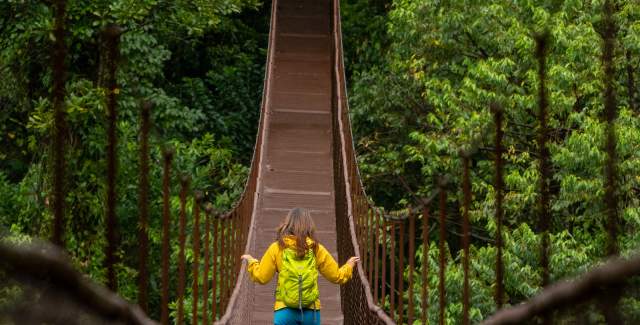
Complete the bird watching experience with a visit to a coffee farm and take your special tour to see the long-tailed silky-flycatcher (Ptiliogonys caudatus), the red-headed barbet (Eubucco bourcierii), the dark pewee (Contopus lugubris) and plenty of hummingbirds, such as the scintillant hummingbird (Selasphorus scintilla).
Another option is to walk the Bajo Mono trail, where, without going too far from the village, you can see the yellow-billed cacique (Amblycercus holosericeus), the grey-capped flycatcher (Myiozetetes granadensis) and the rosy thrush-tanager (Rhodinocichla rosea).
Rest assured that when you visit Boquete on your next vacation you'll have a very close encounter with hundreds of birds. Get out your notebook and do your own count. This is a place where, just by leaving your room, you can see migratory, local or endemic birds.

